History of Yakutsk
Foundation of Yakutsk
Yakutsk is one of the oldest Russian cities in Siberia and the Far East. In the fall of 1632, a detachment of the Yenisei Cossacks led by Pyotr Beketov, exploring the banks of the Lena River, laid the Yakutsk (Lensky) ostrog (small fortress) on the right bank of the river, about 70 km downstream from today’s Yakutsk. It became the first Russian fortified outpost on the Yakut land. Later, it helped the Cossacks to establish Russian control over the entire northeastern Siberia.
One of the reasons for the founding of the Yakutsk ostrog was to create a center for collecting yasak (tribute) from the local Yakut population (mainly furs). At first, its garrison was rather small in number (30 Cossacks). In 1634, the fortress withstood the siege of the Yakuts. In 1635, local Cossacks received the right to be called Yakut Cossacks. In 1638, it became the center of the newly formed Yakutsk Voivodeship.
In 1642-1643, the Yakutsk fortress was moved to its present location - to the Tuymaada valley. This was done because the place where the original fortress was built turned out to be regularly flooded in spring. The Yakutsk ostrog became a town and was named Yakutsk.
Since that time, Yakutsk was gradually developing as a typical military-administrative and trade center of Eastern Siberia. Its geographical position played an extremely important role in the development of Yakutsk. Being in the central part of the region, Yakutsk found itself at the junction of waterways, roads and was connected with a lot of regions of the North and Far East of Russia.
More Historical Facts…
Yakutsk in the 18th - early 20th century
In the 18th century, the Yakutsk region was expanded by territories in the north, east and south, inhabited by northern peoples. The town of Yakutsk lost its military and defense significance and turned into an administrative and commercial center. In addition, Yakutsk became a place of exile for political prisoners.
Yakutsk was also the starting point from where the expeditions of such Russian explorers as Mikhail Stadukhin, Semyon Dezhnev, Vladimir Atlasov, Ivan Moskvitin, Vasily Poyarkov, Erofei Khabarov, Vitus Bering, Alexey Chirikov, Khariton and Dmitry Laptev, Semyon Chelyuskin began.
In 1851, Yakutia received the status of a separate governorate with the center in Yakutsk. By the end of the 19th century, the population of Yakutsk reached 7 thousand people. At this time, the industrial development of Yakutia began, in particular gold mining.
At the beginning of the 20th century, Yakutsk had 930 residential buildings, including 79 Yakut yurts, 8 stone and 8 wooden Orthodox churches, a synagogue, 16 educational institutions (including a women’s gymnasium and a theological seminary), a regional statistical committee with a regional museum, a state printing house, two libraries. The active development of Yakutsk took place before the First World War (1907-1913). A power station and a telephone exchange were built.
Yakutsk in Soviet times and beyond
As a result of the Russian Civil War, Soviet power was established in Yakutia. On April 27, 1922, the Yakutsk Autonomous Soviet Socialist Republic was formed - the first statehood in the history of the Sakha people. Yakutsk became the capital of the republic.
In 1923, according to the All-Russian Census of the Urban Population, 10,065 people lived in Yakutsk: Russians - 5,445, Yakuts - 3,050, Jews - 627, Ukrainians - 377, Tatars - 326, Koreans - 58, representatives of other nationalities - 182.
During the years of the first five-year plans, the growth of industry in Yakutsk greatly influenced the population of the city. In 1917-1939, the population increased more than 7 times, from 7.3 to 52.9 thousand people, mainly due to the influx of personnel to newly built enterprises.
During World War II, Yakutsk hosted an airway control of ALSIB (Alaska-Siberia or the Northern Trace) air route, along which aircraft were transferred under the Lend-Lease program from the US to the USSR. After the war, the accelerated industrial development of the subsoil of the region caused an influx of a large number of specialists and workers from other regions of the USSR into Yakutia and its capital.
A construction complex was created in the city and suburban settlements, enterprises of the timber processing, coal, light, food industries were expanded. Yakutsk became a major hub for water, road and air transport. The search for diamonds and the discovery of the first deposit in 1954, and then 15 more large deposits, made Yakutia the largest diamond mining center in Russia. In the late 1960s, the city’s population exceeded 100 thousand people.
In 1989, the population of Yakutsk was 186,626 people. On December 27, 1991, the Yakut ASSR was renamed the Republic of Sakha (Yakutia). Yakutsk remained its capital.
In the 2000s, the rapid increase in the population of Yakutsk was caused by both natural growth and a significant migration inflow of the population, mainly from other parts of the republic (internal migration). Most of them were young people aged 16-29 who came to Yakutsk to receive secondary specialized and higher education, find a job.
Streets of Yakutsk
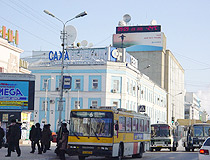
Minus 24 degrees Celsius - a typical winter day in Yakutsk
Author: Natxo Rodriguez
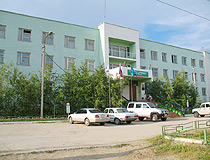
Summer in Yakutsk
Author: Andrey Khon
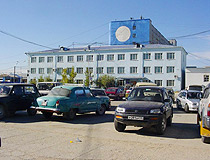
Sunny day in Yakutsk
Author: Natxo Rodriguez
Yakutsk - Features
Yakutsk is located in a flat area in the Tuymaada valley on the left bank of the Lena River, in its middle reaches. The city is on average about 20 km long and 3 km wide. In summer, Yakutsk has a long period of “white nights”, and in winter (in December), daylight lasts only 3-4 hours. The distance to Moscow by road is about 8,250 km.
This city is in a zone of sharply continental climate and permafrost. Winter in Yakutsk is extremely harsh, the average January temperature is minus 38.6 degrees Celsius, almost every winter the temperature can drop to minus 50 degrees Celsius. Winter lasts from October to April, spring and autumn are very short.
Summer in Yakutsk is characterized by little rainfall and often intense heat. The average temperature in July is plus 19.5 degrees Celsius. The annual temperature range of Yakutsk (over 100 degrees Celsius) is one of the largest on Earth and is approximately equal to the annual amplitude of the “cold poles” - Oymyakon and Verkhoyansk. Fogs are a very typical atmospheric phenomenon for Yakutsk (on average 60 days a year).
According to the 2002 census, the ethnic composition of the population of Yakutsk is as follows: Russians - 46.1%, Yakuts - 42.4%, Evenks - 0.8%, Evens - 0.6%, Yukagirs - 0.1%, other nationalities - 10%. About 30% of the population of the Republic of Yakutia lives in Yakutsk.
The administrative and cultural center of the republic, Yakutsk does not have any developed industry. It is the largest center of trade and business in Yakutia, entrepreneurship is the backbone of the city’s economy. Most of the freight traffic, in the absence of railway transport, passes through the Yakutsk river port.
Yakutsk is the largest city in Russia with no rail links to the rest of the country. Getting to Yakutsk by car is not so easy: the federal highway A-360 “Lena” reaches the village of Nizhniy Bestyakh located on the right bank of the Lena River, opposite Yakutsk. In summer, you can cross the Lena by a cargo-passenger ferry, in winter (December - April) - on the ice of the river. During the period of ice drift and freeze-up, communication is possible only by air, as well as on hovercraft.
International airport “Yakutsk” named after Platon Oyunsky offers regular flights to such cities as Irkutsk, Novosibirsk, Khabarovsk, Vladivostok, Moscow, St. Petersburg, and a number of others. It is the only proving ground in the world for testing new aircraft in low temperatures. Urban and suburban passenger transport is represented by buses and taxis.
On the flag of Yakutsk, in a red rhombus, there is a silhouette of a wooden defensive tower of the 17th century - the symbol of Yakutsk. The coat of arms of Yakutsk depicts a black eagle holding a scarlet sable in its paws.
The main souvenirs that can be bought in Yakutsk are handicrafts made of mammoth bone and horsehair, dishes in the national style made of birch bark, wood, ceramics, Yakut knives, high fur boots and national jewelry, cell phone cases decorated with fur and embroidery.
Main Attractions of Yakutsk
Cultural and Natural Complex “The Kingdom of Permafrost” - one of the main sights of the Republic of Sakha (Yakutia), which is a giant non-melting glacier inside the mountain located at a distance of about 10 km from Yakutsk.
Here you can see the throne room of Chyskhaan, the Lord of Cold, ice sculptures created by the best masters of Yakutia, a ceremonial hall, and an ice bar. In the mini-museum of paleontology, you can see the exposition of the remains of mammoths and other animals of the Ice Age.
The tour takes about an hour. In winter, the temperature in the complex is about minus 10 degrees Celsius, in summer - no higher than minus 5 degrees Celsius. Before the excursion, visitors put on special warm clothing. The 5th kilometer of Vilyuyskiy Trakt (the bus stop “Chochur-Muran”).
Ethnographic Complex “Chochur-Muran”. Here you can see the restored wooden buildings of the past centuries. The merchant’s house with a barn is of particular cultural value. The hunter’s house will appeal to people interested in the history of northern peoples. In addition to inspecting the interiors of buildings, on the territory of the complex, tourists can ride snowmobiles, sled dogs and reindeer, and attend old rituals. The local restaurant serves national Yakut cuisine. It is located in close proximity to the Kingdom of Permafrost to the south.
Observation Deck “Chochur-Muran” - the first observation deck in Yakutsk located on the highest hill (sopka) of the city. From here you can view the surroundings from a height of about 200 meters. A particularly impressive view opens up over the Tuymaada valley. The observation deck can be found opposite the ethnographic complex “Chochur-Muran”.
Mammoth Museum named after P. A. Lazarev - a museum with numerous paleontological findings. The collection consists of about 1,500 unique objects that tell about prehistoric animals. Here you can not only see mammoths, musk oxen, cave lions, bison, and other prehistoric animals, but also learn about their way of life. Unusual souvenirs made from tusks and mammoth bones are sold at the local shop. Kulakovskogo Street, 48.
Mammoth Monument - one of the most famous symbols of Yakutsk and the Republic of Sakha (Yakutia). It was installed on the square near the Permafrost Institute in 1972. The Permafrost Institute also houses an interesting underground laboratory created to study permafrost. This is one of the most scientifically significant sights of Yakutsk. Merzlotnaya Street, 36.
Treasury of the Republic of Sakha (Yakutia) - a museum with a collection of unique nuggets of precious metals, precious stones, as well as jewelry and ornamental items made of precious metals, precious stones and other materials of historical and artistic significance. The treasury reveals to tourists all the wealth of the bowels of Yakutia. The exhibition features over a thousand items. Kirova Street, 12.
Museum of History and Culture of the Peoples of the North named after E. M. Yaroslavsky. This local history museum has four main collections: archaeological, historical, natural, and ethnographic. Here you can immerse yourself in the atmosphere of local religious traditions and rituals, and learn a lot about the minerals and fauna of Yakutia. Collections of shamanic accessories, weapons and equipment of the pioneering Cossacks are very popular with visitors. Lenina Avenue, 5.
Museum and Center of the Khomus of the Peoples of the World. There is no such museum anywhere else in the world. The khomus (the Jew’s harp) is the national musical instrument of Yakutia. The exhibition tells about the khomuses of different peoples of the world, the rituals of shamans, the peculiarities of using this musical instrument in different cultures. Kirova Street, 31.
National Art Museum of the Sakha Republic - one of the largest art museums in the north-east of Russia with a rich collection of paintings. Especially valuable canvases belong to the brush of Levitan and Korovin. Among the 12 thousand exhibits, you can find not only world-class masterpieces, but also paintings created by local artists.
Collections of masterpieces of Yakut bone carvers, unique fur mosaics, and authentic embroidery are of particular artistic value. There is also a hall of Oriental art, which displays Tibetan, Japanese, and Mongolian paintings on scrolls, netsuke. Kirova Street, 9.
Grado-Yakutsk Transfiguration Cathedral (1826-1845) - the oldest church in Yakutsk. This five-domed church with gilded domes is a wonderful example of the pseudo-Russian style in religious architecture. Kirova Street, 3.
Archi Djete (Archy House) - the spiritual center of the Yakut people, where you can get acquainted with the traditions, culture, and religion of local peoples. Tourists are invited to watch the rituals performed by a real shaman. In some of them you can participate and receive, for example, a blessing from the spirits.
The buildings of the center are constructed in the national Yakut style in the form of yurts. Sacred totems adorn its main entrance. Exhibitions of masters of decorative and applied arts and folklore festivals are held here too. Chernyshevskogo Street, 24.
Historic Quarter “The Old Town” - a historical and architectural complex, an open-air museum. All buildings, including the shopping arcade and parts of the wooden fortress, were restored according to old photographs, paintings, and drawings. Arzhakova Street, 6.
We also recommend that you visit the Peasant Market in Yakutsk (Lermontova Street, 62/2). Even in winter, in severe frosts, freshly caught fish, meat, as well as cranberries, lingonberries, and other northern berries are sold here.


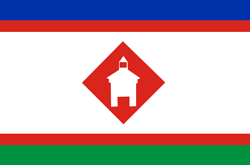
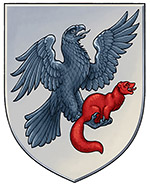
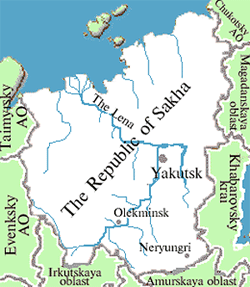



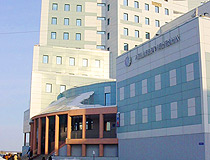
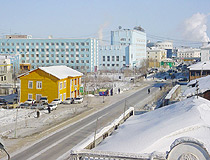
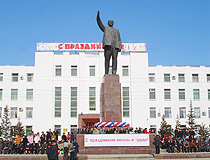
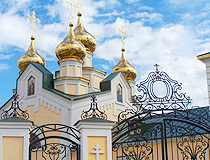
The comments of our visitors